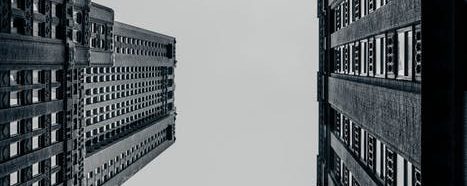Cox, workers and MNCs: some thoughts
As discussed in class, the Cox article (Labour and Multinationals) is a complicated read but can be reduced to an ultimately simple claim: the marginal and oppressed of the world aint who they used to be. In keeping with his Marxist leanings Cox wants to advocate on behalf of workers, but also realizes that Marxism is outdated and/or too narrow in a couple of key ways. First, the rise of MNCs in the 20th Century has trans-nationalized what were once essentially national confrontations between workers and owners of the means of production. While Marx uses a global rhetoric (“workers of the world unite”) he is well aware that such unity is more potential then real, and unaware that MNCS will soon arise and dramatically alter the nature of production and class relations. The shop-floor of Marx’s day has increasingly become the Export Processing Zones (EPZs) of today, a development particularly important to the most marginalized “members” of society. Second, this development reveals the outmoded vocabulary of classical Marxism. The “bourgeoisie” and “proletariat” give way to the “trans-national managerial class” and “the primary & secondary labour class.” More importantly, Cox identifies a new and especially vulnerable group, the “social marginal class,” whose ranks are increasing everywhere but especially in the developing world.
Cox avoids using the term “Labour” (capital L) because it has become a synonym for trade unionism, workers who have done reasonably well via a process he calls the “institutionalization of class struggle.” Cox’s concern is for non-unionized employees (secondary labourers) and social marginals (workers who have either dropped out of the market altogether or who are in grave danger of doing so). This group would comprise socalled “sweatshop” labourers, child workers, and so on. In a sense, Marx’s vision is partially achieved: some of the workers of the world have united, but primarily in the advanced industrial states, selling out their brothers and sisters in the process, both at home and (mostly) in the EPZs of the developing world.
This trans-nationalization of class struggle has made worker exploitation more extreme, more global, but also more invisible. The struggle for workers rights, where it can happen, is increasingly in the “sweatshops” that populate the periphery of global production. Where workers fight back, they face obstacles (from lack of governmental protection to paramilitary death squads) and/or MNCs simply move on, or “down,” to host states where workers are more compliant.
Cox article in Summary Overview
Synopsis: Transnationalization of class struggle
• an adaptation of classical Marxism
• goes beyond simple 2 class model (exploiting & exploiting class)
• inspired by Gramsci and Habermas (Critical Theory)
TRANSNATIONAL MANAGERIAL CLASS(TMC)
• the new “ruling class”
• composed of CEOs, upper management, economic diplomats, IGO officials, high ranking government officials, and just about anyone whose direct interests are consciously served by the globalization of finance, labour, and production (this class thinks globally)
• dominant but small class relative to others
PRIMARY LABOUR CLASS
• created in advanced industrial states by creation of trade unions
• Cox calls this the “institutionalization of the class struggle”
• this class protects its new-found powers and privileges at the expense of less fortunate workers (secondary labour class)
• secondary labour class comprises “McJobs” (low pay, low skill workers in danger of falling out of this class (though a lucky few may also move up into the ranks of the TMC (both primary and secondary labour class class thinks locally)
SOCIAL MARGINAL CLASS
• most impoverished and insecure of all classes
• a new class (both to the world and to Marxist theory)
• barely a class at all (e.g. too marginal to have a “class consciousness”)
• an emerging and growing class in LDCs
